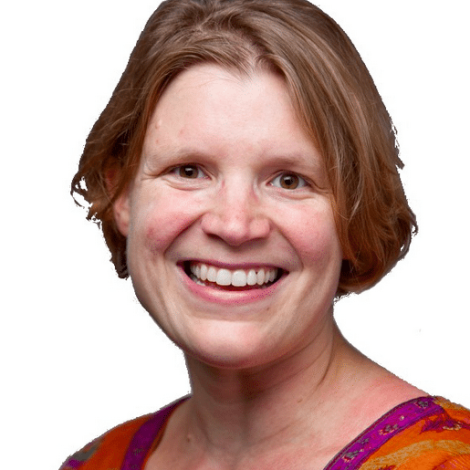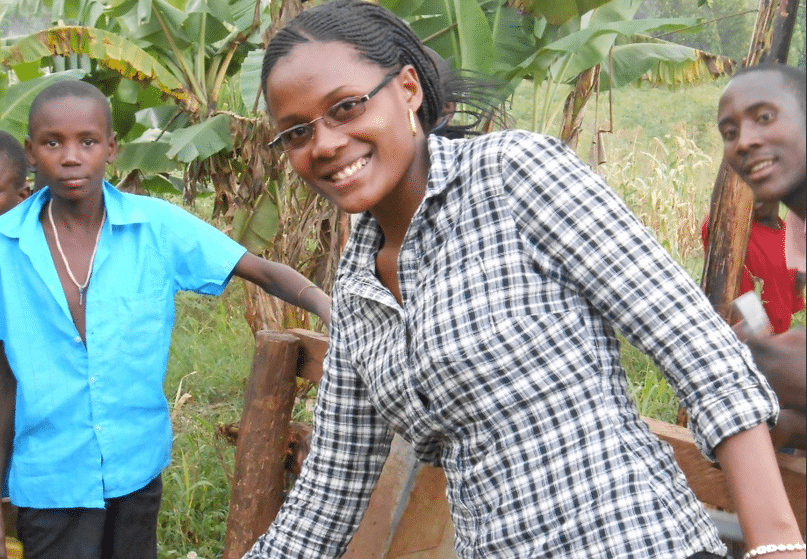Daniele Lantagne has spent more than a decade fighting against a long list of waterborne killers worldwide. Some notorious stand-outs on that list include cholera, E. coli and salmonella, among the bacteria, the schistosomas behind schistosomiasis – snail fever – the protozoan parasite giardia and viruses such as rotavirus, polio and hepatitis A and E (MedicalEcology.org has a vivid description of the microbial killers).
We often cite the World Health Organization’s statistic (and it bears citing again) that these pathogens and others take as many as two million lives in developing countries every year, most of them children under the age of five. Lantagne works to treat water on large scales in entire communities and to teach others how to do that work and save people’s lives.
In 2010, while completing her doctorate at the London School of Hygiene and Tropical Medicine, Lantagne was a felllow in sustainability science at Harvard’s Kennedy School of Government and directed programs in water treatment in developing countries with Innovations for Poverty Action. From 2003 to 2010 she worked as an expert on household water treatment in developing countries for the US Centers for Disease Control and Prevention. Before that, she advised MIT students in projects treating water in Haiti.
She is now an assistant professor of civil and environmental engineering at Tufts University and sits on the board of directors at Potters for Peace, the ceramic filter maker in Central America and other regions worldwide, and at Spring Health, which sets up chlorine-treated water kiosks in Indian communities. We asked her five questions.
E4C: When forced to choose, is it better to treat water well for a few people or not so well for a lot of people?
DL: This is a really tough ethical question, and one that is not possible to answer in a generalized manner, as this will depend on the context. In every context, water should be treated to remove the organisms that cause disease. For example, in a cholera outbreak, the addition of chlorine alone will easily inactivate the cholera organism in water, so very simple treatment is effective. In a situation where both protozoa and viruses are causing diarrheal disease in children, you may need combined filtration and disinfection treatment. To answer this question for each context, you would need to assess the local disease burden.
E4C: What is one of the promising trends you see in water treatment in developing regions?
DL: The most promising trend in water treatment that I see is a de-emphasis on particular products as the solution, and more emphasis on local acceptability, programmatic implementation, and monitoring and evaluation to ensure results. This trend will help ensure that programs are appropriate for the local conditions, acceptable to the population, and sustainable.
E4C: What do you think is a dead end in water treatment in developing communities that some people in the field just won’t let die?
DL: The one repeated ‘dead end’ that I often see is the following scenario: An individual or group in the United States has a strong and real desire to help a community with water treatment.
To do this they complete three actions:
- Identify the community (such as an established sister community);
- Identify (or develop themselves) a water treatment product; and,
- Install that product in that community.
This type of implementation – which does not take into account local water quality, water treatment technology selection, the community knowledge, attitudes, and practices around water, the desire (or lack of it) of the community for water treatment, and the necessary behavior change communication – has been shown again and again to be ineffective.
E4C: What devices, complimentary technologies or programs have caught your attention? Do you have any recommendations?
DL: There are not water treatment devices in isolation that catch my attention, but instead programs that distribute water treatment devices that catch my attention. Two programs that I think are worth highlighting are the Deep Springs International Chlorine program in Haiti and the RDIC ceramic filter program in Cambodia.
Both programs have qualities that make them highly successful, including: They target people with unclean water, they provide a technically sound solution that is locally manufactured with high quality control standards, they have an established long-term program in country, they work with local staff, they have evidence-based behavior-change communication that utilizes trusted local individuals and networks, and they continually modify and improve their programs based on monitoring and evaluation results. These programs are representative of the best water treatment programs we have worldwide, and have evidence to back them up.
Another larger-scale program that is worth mentioning is the Population Services International Waterguard project, which socially markets water treatment in more than 20 countries, increases knowledge of and access to water treatment products, and increases both the use of water treatment and the availability of water treatment products nationally for emergencies and other programs to use.
E4C: Could you make a short list of elements that makes a water treatment program effective?
DL: The most successful programs use an effective water treatment technology that is appropriate for the local water quality and cultural context that is distributed in a cost-effective and sustainable manner.

